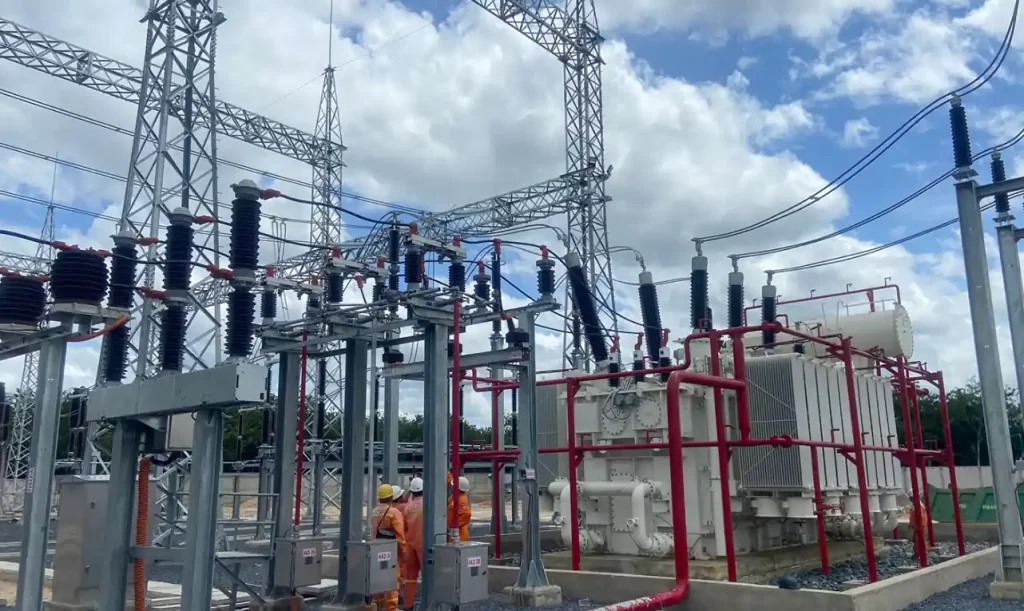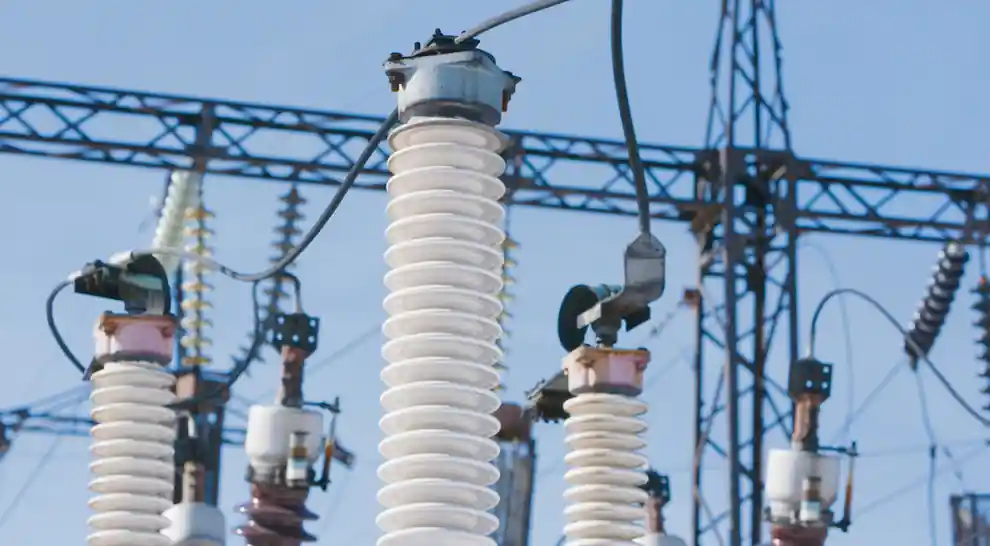- Introduction
- What Is a 220 kV Substation?
- Main Functions of a 220 kV Substation
- Key Components of a 220 kV Substation
- 1. Power Transformers
- 2. Circuit Breakers
- 3. Isolators (Disconnect Switches)
- 4. Current Transformers (CTs)
- 5. Voltage Transformers / CVTs
- 6. Lightning Arresters
- 7. Busbar System
- 8. Control & Relay Panels
- 9. Earthing System
- 10. SCADA System
- 11. Battery Bank and Chargers
- Types of 220 kV Substations
- 1. AIS (Air-Insulated Substation)
- 2. GIS (Gas-Insulated Substation)
- 3. Hybrid Substation
- Layout of a 220 kV Substation
- Applications of 220 kV Substations
- Design Considerations
- Advantages of 220 kV Substations
- Challenges
- Conclusion
Introduction
A220 kV substationis a high-voltage electrical facility that plays a critical role in regional power transmission systems. It serves as a key interface between power generation plants and the downstream transmission and distribution networks. By stepping up or stepping down voltage levels and enabling secure control of high-voltage power flow, 220 kV substations ensure grid reliability, efficiency, and safety.
As countries expand their power infrastructure to meet industrial growth, urbanization, and renewable energy integration, 220 kV substations are increasingly being deployed in national grids, industrial corridors, and inter-regional interconnectors.

What Is a 220 kV Substation?
A220 kilovolt (kV) substationoperates at a nominal voltage of 220,000 volts and is typically part of the high-voltage transmission grid. Its core function is to either step down voltage from higher levels (e.g., 400 kV) or step up voltage from lower levels (e.g., 132 kV or 110 kV), depending on the power flow direction.
These substations are generally designed to:
- Connect power plants to transmission grids
- Interface regional grid zones
- Supply high-load consumers like heavy industries or data centers
- Receive bulk power for distribution to smaller substations
Main Functions of a 220 kV Substation
- Voltage transformation: Step up or step down voltage between different grid levels.
- Power flow control: Route electricity to desired feeders and zones.
- System protection: Isolate faulty circuits to prevent cascading outages.
- Grid balancing: Manage load sharing between parallel networks.
- Monitoring and automation: Use SCADA and IEDs for real-time diagnostics and control.
Key Components of a 220 kV Substation
A 220 kV substation includes a variety of high-voltage equipment and support systems. Below is a detailed list of essential components:
1.Power Transformers
- Voltage rating: 220/132 kV, 220/66 kV, 220/33 kV
- Capacity: 100 MVA to 315 MVA
- Cooling: ONAN/ONAF (Oil Natural Air Natural / Oil Natural Air Forced)
- May include On-Load Tap Changer (OLTC)
2.Circuit Breakers
- Type: SF₆ gas-insulated or vacuum (for lower voltage parts)
- Function: Interrupt fault currents during abnormal conditions
- Installed on incoming/outgoing feeders and transformer bays
3.Isolators (Disconnect Switches)
- Used for no-load isolation of equipment
- Available in single or double-break design
- May include earth switch for safety during maintenance
4.Current Transformers (CTs)
- Function: Provide scaled-down current signals for metering and protection
- Typical ratio: 1200/1A, 1500/1A
5.Voltage Transformers / CVTs
- Step down high voltage for protective relays and meters
- Can also serve as carrier signal coupling devices in communication systems
6.Lightning Arresters
- Protect equipment from lightning strikes and switching surges
- Installed at line entries and near transformers
7.Busbar System
- Types: Single bus, double bus, main & transfer bus
- Conducts power between components within the substation
- Material: Copper or aluminum, often tubular or conductor-based
8.Control & Relay Panels
- House digital relays, annunciators, meters, and SCADA I/O modules
- Located in the substation control room or prefabricated control buildings
9.Earthing System
- Ensures personnel safety and equipment protection
- Grid design follows IEEE 80 or equivalent standards
- Includes earth mat, rods, conductors, and pits
10.SCADA System
- Supervisory Control and Data Acquisition system for remote monitoring
- Interfaces with all digital protective devices (IEDs)
- Enables real-time fault detection, load analysis, and remote control
11.Battery Bank and Chargers
- Provides uninterrupted power for protection and control systems
- Backup typically lasts 2–6 hours depending on load
- Usually 220V DC or 110V DC systems
Types of 220 kV Substations
1.AIS (Air-Insulated Substation)
- Equipment is installed outdoors and air is the primary insulation medium
- Easier to inspect and maintain
- Requires more space and is vulnerable to pollution and weather
2.GIS (Gas-Insulated Substation)
- Equipment is housed in metal-enclosed SF₆ gas compartments
- Compact, low-maintenance, suitable for urban or harsh environments
- Higher upfront cost but lower long-term operating expenses
3.Hybrid Substation
- Combines features of AIS and GIS
- Optimizes space and cost
- Often used in retrofitting or partial upgrades
Layout of a 220 kV Substation
A typical layout includes:
- 2 or more incoming lines (220 kV feeders)
- 2–4 power transformers (220/132 or 220/66 kV)
- Multiple outgoing feeders to lower-voltage substations
- Busbars arranged in double bus or breaker-and-a-half schemes
- Transformer bays and line bays
- Control room building with SCADA and battery backup
Applications of 220 kV Substations
220 kV substations are widely used in:
- Interstate or inter-regional power transfer
- Bulk power evacuation from hydro, thermal, or solar plants
- Grid interconnection between transmission zones
- Powering industrial clusters or economic zones
- High-voltage integration of renewable energy plants (solar, wind)
- Cross-border grid connectivity
Design Considerations
When designing a 220 kV substation, engineers consider:
- Forecasted load demand and fault levels
- Geographic and environmental conditions
- Land availability (AIS vs GIS)
- Future expansion possibilities
- Safety and accessibility
- Cybersecurity in SCADA-connected substations
Advantages of 220 kV Substations
- Efficient long-distance transmission
- Reduced power losses compared to lower voltages
- High load capacity for industrial and utility networks
- Enhanced grid stability with proper protection schemes
- Integration-ready for smart grid and automation platforms
Challenges
- High installation and equipment costs
- Need for skilled workforce and strict commissioning standards
- Environmental management (oil containment, SF₆ handling)
- Maintenance complexity in multi-bay configurations
Conclusion
A 220 kV substation is a cornerstone of modern power infrastructure, providing efficient transmission, protection, and regulation of high-voltage power. Whether for national grid stability, renewable energy evacuation, or industrial supply, these substations offer unmatched capacity, scalability, and performance.
With the rise of smart grids and demand for clean energy integration, future 220 kVsubstationswill increasingly feature digital monitoring, GIS design, remote operation, and AI-powered predictive maintenance — making them smarter, safer, and more reliable than ever before.
